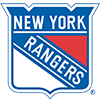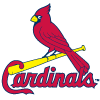Injuries are a huge part of baseball; the actual game itself and its fantasy counterpart. Success in the fantasy world makes assessing injuries mandatory. But, it's not just who will replace the injured player in your lineup, as there are many other factors that are part of the equation. How much time will my player miss? What should I expect when he returns? Was the poor performance immediately prior to his hitting the injured list related to the injury? Does this injury often include lingering side effects? Should I pursue an injured player on draft day, hoping for a significant discount?
That's lot to think about.
Naturally, we will focus on injuries to pitchers. I haven't compiled statistics, but it seems to me pitchers, on average, suffer more injuries of longer duration than position players. Minor injuries – day-to-day stuff – is never ending, but what about the big stuff like torn UCLs, frayed rotator cuffs, and thoracic outlet syndrome. Now I'm not a surgeon, a doctor, a trainer or even a first-year med student. My thoughts here are based on observation and experience, not an in-depth knowledge of the body. Folks, it's been a very long time since I took anatomy and kinesiology. The one thing I will start off with is that injuries are happening more frequently than ever. For example, look at Tommy John surgery. Did you know this: Tommy John surgery remained a rarity for most of the 20th century, but by 2012, one in seven
Injuries are a huge part of baseball; the actual game itself and its fantasy counterpart. Success in the fantasy world makes assessing injuries mandatory. But, it's not just who will replace the injured player in your lineup, as there are many other factors that are part of the equation. How much time will my player miss? What should I expect when he returns? Was the poor performance immediately prior to his hitting the injured list related to the injury? Does this injury often include lingering side effects? Should I pursue an injured player on draft day, hoping for a significant discount?
That's lot to think about.
Naturally, we will focus on injuries to pitchers. I haven't compiled statistics, but it seems to me pitchers, on average, suffer more injuries of longer duration than position players. Minor injuries – day-to-day stuff – is never ending, but what about the big stuff like torn UCLs, frayed rotator cuffs, and thoracic outlet syndrome. Now I'm not a surgeon, a doctor, a trainer or even a first-year med student. My thoughts here are based on observation and experience, not an in-depth knowledge of the body. Folks, it's been a very long time since I took anatomy and kinesiology. The one thing I will start off with is that injuries are happening more frequently than ever. For example, look at Tommy John surgery. Did you know this: Tommy John surgery remained a rarity for most of the 20th century, but by 2012, one in seven MLB pitchers had received it. In 2017, that figure had climbed to one in four, and as of last season (2021), one in three had undergone the operation, based on data compiled by baseball analyst Jon Roegele. My guess is we are approaching half of all pitchers requiring the surgery.
Let's start by stepping back and taking a deep breath. What you've seen regarding injuries, may be changing over time. Fifty years ago, it wasn't unusual for many starting pitchers to exceed 300 innings during the regular season. Today, only a handful will break 200 innings. There has to be a reason. There is, and it's probably three-fold. First, young people are asked to pitch at a very high level younger than ever before. That puts a lot of miles on their arms long before you see them in the major leagues. Second, the development of "new" pitches could put much more stress on the pitcher's arm. More velocity, and more importantly, more movement, have brought newer pitches into prominence. Most notably, in my mind, the slider has become a key pitch for many, and by nature, it puts a lot of stress on the arm. And, finally, theoretically, bigger and stronger is good, but "max effort" pitching is certainly approaching the body's limits.
I don't see those factors changing. There is too much money involved. Teams will pay the big bucks for a high school kid with a big arm. Kids are going to be encouraged to chase that dream. Injuries, even major injuries involving surgery, are an accepted part of the equation. Missing time as a teenager is the norm now, and it's the price being paid for a triple-digit fastball and a wicked slider before the pitcher is old enough to drive a car. I guess we just have to deal with it.
Some injury observations to consider:
The list of potential injuries would go on for pages. Everything from serious injuries requiring surgery (and rehab lengths of a year or more) to minor bumps and bruises you will probably never hear about but will impact performance. In fact, over the course of a full season, most pitchers – it is my theory, literally almost all – will have stretches of performances that ranges between exceptional and horrible, and injuries are a part of it. You have to always keep this in mind. Being human, those pitchers out there on the mound will perform differently from day to day, and in some cases even from inning to inning. Again, not as a medical expert, I would like to share some observations about injuries we read about every day, and discuss my approach to handling these injuries.
- Tommy John surgery or rebuilding an elbow – Perhaps the most publicized of all injuries a pitcher will face, serious ligament damage in the elbow is so commonplace these days it's nearly a forgone conclusion. The majority of pitchers will miss at least a year to rehab following this surgery. There is usually no warning. Something "pops," and the trainer walks the pitcher off the mound. Surgery typically occurs within a few days, and you can expect the pitcher to be out from 12 to 18 months. In best case scenarios, he can be back in 12, but may not be completely back for 18. Velocity comes back pretty quickly, but the finer points of control and command usually takes longer. However, interestingly, there can actually be a positive side (if that's possible) to TJ surgery. Think of this surgery as providing the pitcher with a shiny new elbow. Trade in that old worn-out elbow for a brand new one with no miles on the odometer. The wear and tear will begin again, but most pitchers (not all) won't face this surgery again anytime soon. At any given time, there will be quite a few high-profile pitchers at various stages of recovery from this procedure. And, it's happening earlier and earlier. For example, a hot pitcher right now, Nathan Eovaldi has had two TJ surgeries; the first when he was a junior in high school. It's no secret, the anticipated timeline for a return to the mound is key in fantasy planning.
- Shoulder injuries are the most difficult to assess – I hate shoulder injuries. There are so many of them, ranging from relatively minor strains to more serious ones requiring surgery, and they all tend to be very difficult to assess. Most have a "typical" rehab schedule, but shoulders are finicky. Setbacks are common, and the pitcher's expected return can drag out for weeks or even months. Each case is individual – some follow the anticipated timeline – but more often than not, there will be delays, and my only real advice would be to exercise patience, waiting until he returns to mound work with positive reports following that work before beginning to plan on the pitcher getting back into game action. I'll add, shoulder injuries are notorious for bringing on seemingly unrelated injuries that occur because mechanics are altered during the rehab. A case in point is that of Carlos Rodon. To be honest, I tend to avoid pitchers with an extended history of shoulder woes. I will add them if the potential return outweighs the risk, but even then I look for a pretty significant discount. A recurrence of shoulder issues seems to be the most likely scenario, so the risk requires an alternative plan.
- Thoracic Outlet Syndrome – I know what TOS is, in general. It's a compression of the blood vessels and/or nerves between the first rib and the collarbone. I suppose that makes TOS a shoulder injury, and more than most, this injury and the frequently resulting surgery carries with it a very unpredictable outcome. Years ago, Bill Singer underwent TOS surgery and came back to continue a solid career, but J.R. Richard never made it back following the procedure. More recently, Stephen Strasburg is still attempting to bounce back three years later, but there are others like Trevor Rosenthal, Tyson Ross, Luke Hochevar, and perhaps most notably, Matt Harvey, who have failed to make a complete recovery. In fact, Harvey just called it a career. I'll admit, I am at a loss to explain why (there's that lack of medical training again) but the bottom line is, even though studies have shown about 80 percent of those who undergo the procedure will return, my experience seems to be the percentage of pitchers who actually return to their previous performance levels following this procedure is very low. It's still considered rare, but the procedure seems to be happening more often of late. Until that trend changes, I will probably avoid these guys, at least until they have pitched enough innings to prove a complete recovery.
- Lower-body injuries should never be overlooked – It may be a bit counter-intuitive, but injuries below the waist can be very problematic. Arm and shoulder injuries can obviously impact a pitcher's performance, but pitchers actually rely very heavily on their lower bodies. Again, the range of severity can be wide, from minor muscle strains to injuries to the knee, for example, that can require surgery. Pay particular attention to injuries that involve the push leg – the right leg for a right-handed pitcher – since much of the pitch velocity and power is generated by the legs. If the pitcher can't drive off the rubber, the velocity will dip, and more pitches could end up in the top half of the strike zone. There can be setbacks, in rehab, but most lower body injuries typically resolve and the pitcher can return to his normal capacity. The biggest concern here is again the potential for mechanics getting out of synch to compensate for pain.
- The case of the "hidden" injury – And here is my promised theory on those inexplicable stretches of poor performance. How many times have you watched one of your pitchers string together a series of lackluster (or worse) outings before eventually, and mercifully, landing on the injured list? I'm inclined to believe almost every pitcher is injured most of the time. The only real question is the degree of injury. Aches and pains are part of sports. Most pitchers will try to pitch through a minor injury, and if there is just minimal pain, there's a good chance that will work. However, sometimes the injury is more problematic. Intensely competitive pitchers, and notably, young pitchers trying to establish themselves might try to pitch through a more severe injury. The team's trainer and medical staff may not even be aware of the injury. It's human nature to make "adjustments" to minimize discomfort, but those adjustments in mechanics and pitching motion can be devastating and could linger long past the recovery from the injury. It's not always to blame, but I think it is more frequent than we know.
Some Notable Rotation Ramblings:
- Speaking of injuries, the Yankees are trying to cobble together a rotation with Rodon hopefully back soon, and Luis Severino who is recovering from a strained lat and could be ready for his 2023 debut this weekend. He's had just a couple short rehab starts so he will likely be on a fairly strict pitch count.
- The St. Louis pitching staff is hopefully getting healthy, and while it's just one outing, Jack Flaherty flashed some of his pre-injury stuff in seven shutout innings against the Brewers. And, the best of it would have to be the 10 strikeouts compared to just two walks. It was impressive and encouraging.
- On the flip side of the coin, I saw pretty much nothing encouraging from Toronto's Alek Manoah who has now issued 32 walks and coughed up eight home runs in just 45 2023 innings. Is he hurt? Is he just lost? He certainly is nothing like he was last year. I'm not giving up, but it's now a major concern.
- One pitcher on the path back from injuries is the Dodgers' Noah Syndergaard, and he finally showed some positive signs in a short (four inning) start earlier this week. The brief outing was the result of a healing cut on his index finger, but he displayed better command and more movement on his pitches.
Endgame Odyssey:
The bullpens are hopefully getting healthier with several potential closers returning. In Tampa Bay, one of my favorite closers for a few weeks each season, Pete Fairbanks, will likely share the ninth inning, at least initially, with Jason Adam. Raisel Iglesias is back with the Braves, but his early results have been disappointing. Give him some time. I'm really looking forward to the return of Liam Hendriks. The White Sox won't rush him, but in his case the challenge will be holding him back. The Yankees keep shopping internally for a closer. Most recently, they have looked at Wandy Peralta, but I think the role is transient. With Ian Hamilton hurt, I lean to Michael King although he is so versatile, they may not want to tie him to the ninth inning. Kyle Finnegan is still the first choice closer for the Nationals, but that doesn't mean they won't juggle things occasionally. Finnegan pitched the eighth earlier this week, and Hunter Harvey blew the save when asked to finish the game. Stay tuned.



































